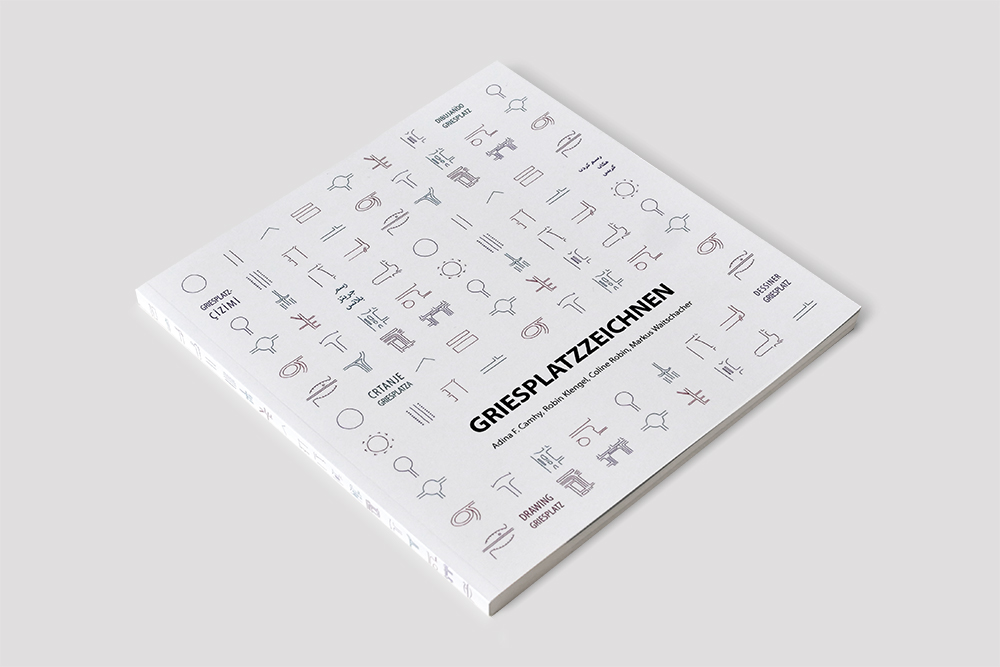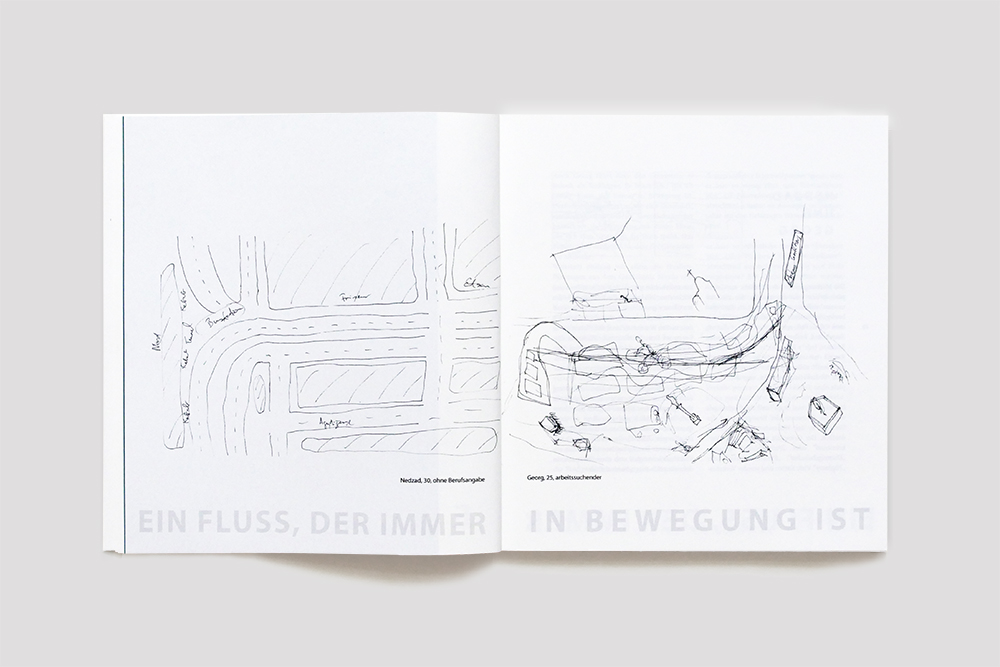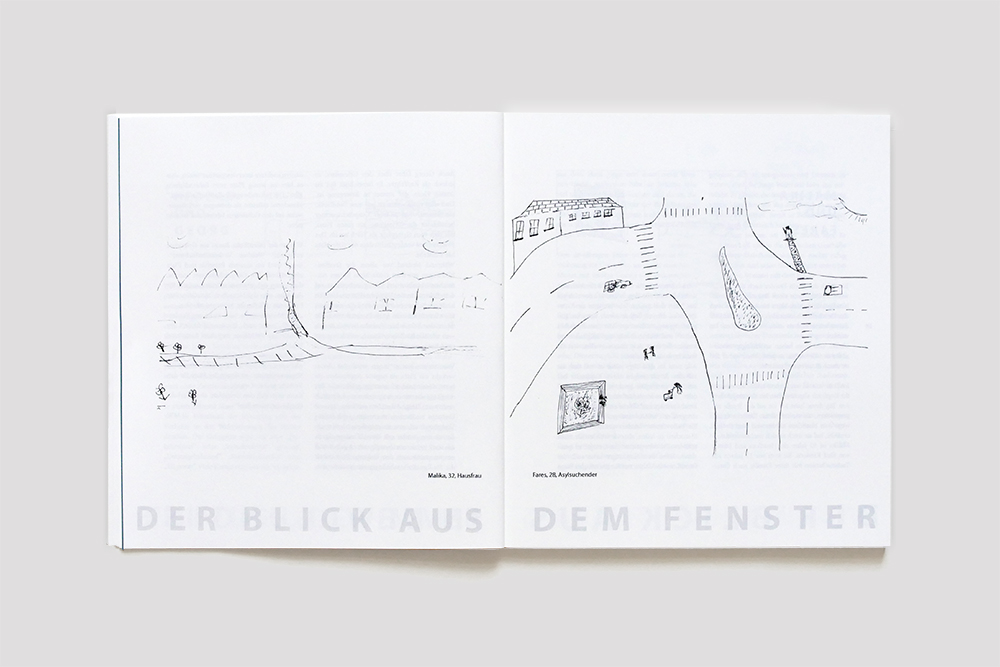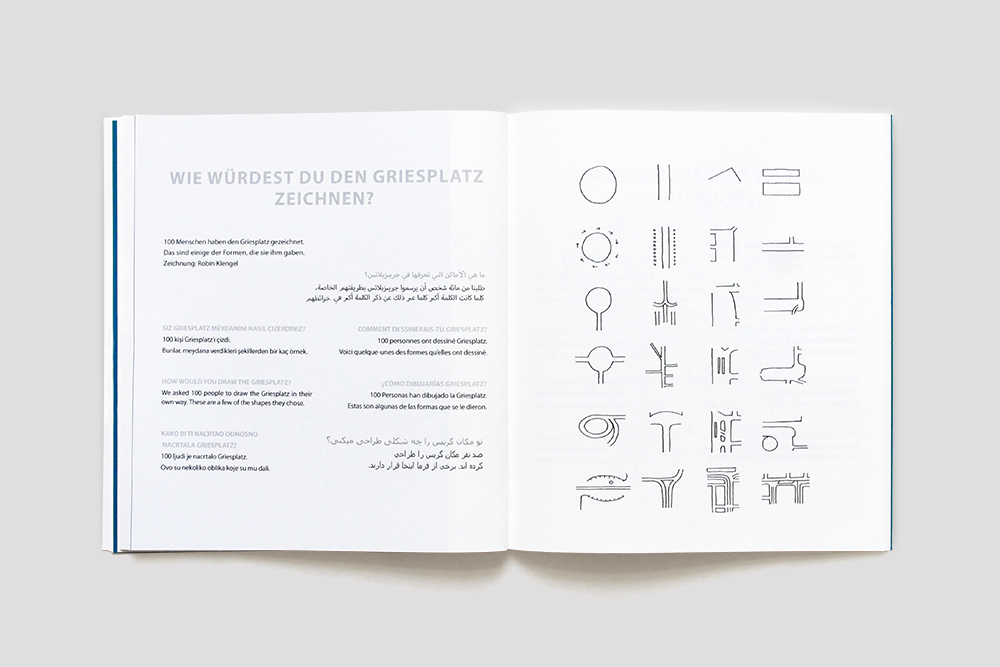GRIESPLATZZEICHNEN
artistic cit research projekt, publication, 2016
DE
künstlerisches Stadtforschungsprojekt, Graz 2016
Projektteam: Adina F. Camhy, Robin Klengel, Coline Robin, Markus Waitschacher
Eine Stadt ist mehr als eine Ansammlung von Häusern und Straßen. Sie entsteht in den Augen der Menschen, die in ihr wohnen und ist voller Bedeutungen, Erinnerungen, Bilder und Geschichten. Die Orte einer Stadt können daher – je nach Blickwinkel – ganz unterschiedlich aussehen. Ein und derselbe Ort kann als Angstraum oder Lieblings-Platz empfunden werden; er kann wichtig sein oder unbedeutend; er kann mit Hoffnung oder Verfall verbunden, eine neue Heimat oder Symbol einer verlorenen Vergangenheit sein.
Der Grazer Griesplatz ist ein solcher Raum. Menschen mit unterschiedlichen Hintergründen kommen hier zusammen. Sie teilen sich diesen Raum, der im Zentrum vieler Lebenswelten steht. Wie schaut der Griesplatz überhaupt aus? Wo fängt er an, wo hört er auf? Welche Dinge sind den Menschen hier wichtig?
Das Projektteam holte im Laufe des Sommers rund 100 subjektive Ansichten des Griesplatzes ein, sog. „Mental Maps” und führte Interviews durch. Aus diesen Daten entstand ein kaleidoskopartiges Gesamtbild des Griesplatzes, das neue Blicke auf diesen kontroversen Stadtraum ermöglicht. Veröffentlich wurde eine Plakatserie sowie eine Publikation mit sämtlichen Mental Maps und ergänzenden Essays.
GRIESPLATZZEICHNEN ist ein Projekt von < rotor > Zentrum für zeitgenössiche Kunst Graz, beauftragt im Rahmen des Griesviertel- Projekts der Stadt Graz – Stadtbaudirektion.
EN
artistic city research project, Graz, Austria, 2016
project team: Adina F. Camhy, Robin Klengel, Coline Robin, Markus Waitschacher
A city is more than a simple collection of houses and streets. It arises in the eyes of its residents and is full of meanings, memories, images and stories. A city’s places can therefore take on a completely different appearance depending on one’s view of them. The same location might be seen as a place of fear or a favourite hangout; important or insignificant; full of hope or falling into ruin; a new homeland or a symbol of a lost past.
The Griesplatz in Graz is one of those places. People with different backgrounds share this space, which lies at the intersection of many different ways of life – and yet it is not really clear how it is essentially constituted. What does the Griesplatz actually look like? Where does it start, where does it end? What things are important to the people here?
This book is a collection of 100 subjective views of the Griesplatz (so-called mental maps) that have been drawn by people who regularly frequent it. What those people express in their maps and what they explained to us was neither purely positive nor negative, but a bit of both; it was mostly ambiguous and sometimes contradictory.
This book is an opportunity to see the Griesplatz from a new and different perspective. The juxtaposition of these very different maps, stories and perspectives results in a complex collective image of the Griesplatz. How do different ways of life exist here alongside each other, in opposition or in harmony?
How do categories like “own” and “foreign”arise? What are feelings of fear or security based on? And why do people evaluate the movements and transformations of a city in such different ways?
GRIESPLATZZEICHNEN is a project by < rotor > center for contemporary art Graz, commissioned in the context of Griesviertel- project by Stadt Graz – Stadtbaudirektion.
Herausgeber_innen: Adina F. Camhy, Robin Klengel, Coline Robin, Markus Waitschacher
Deutsch/ Einführung in: Arabisch, Bosnisch/Kroatisch/Serbisch, Englisch, Farsi, Französisch, Spanisch, Türkisch.
142 Seiten
Haus der Architektur, Graz, 2016
EUR 10,-
ISBN 978-3-901174-80-3





